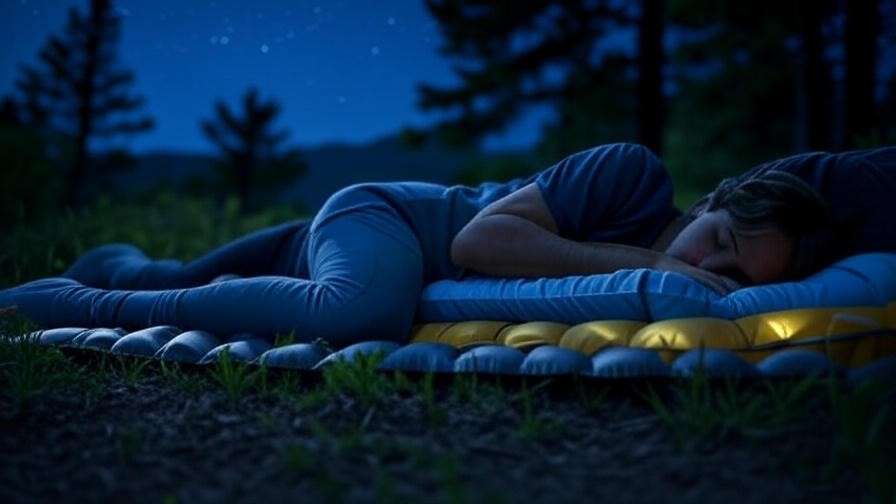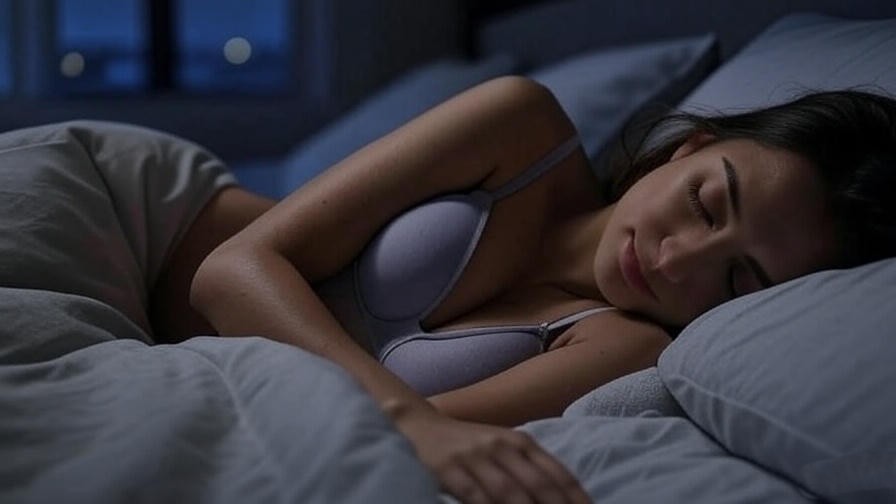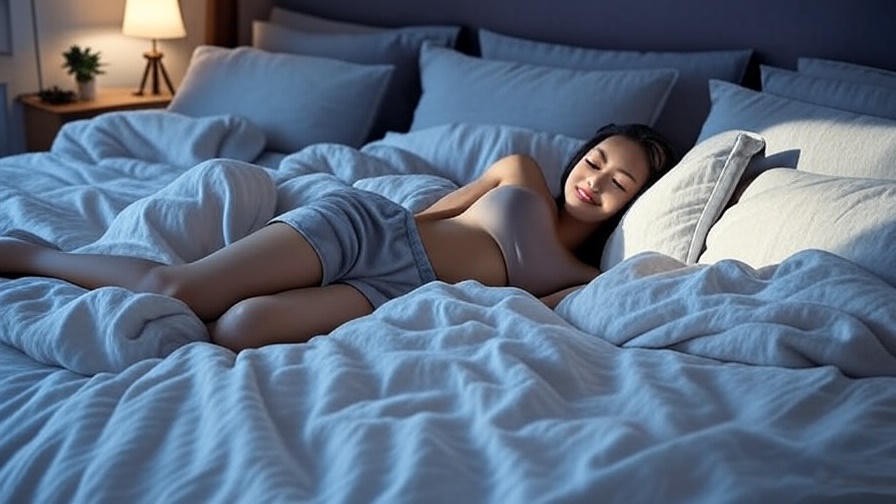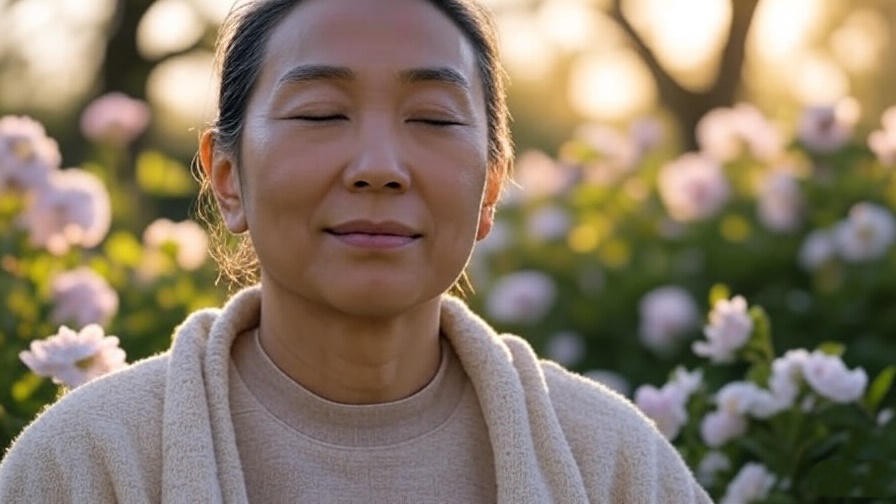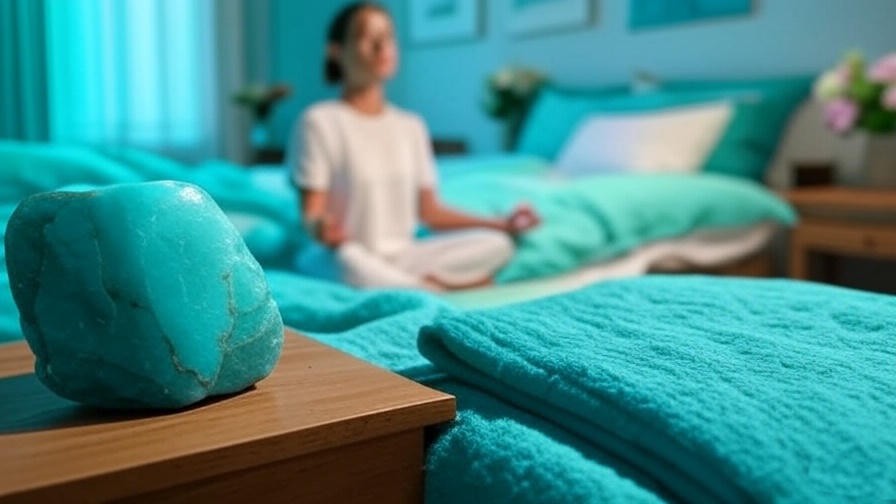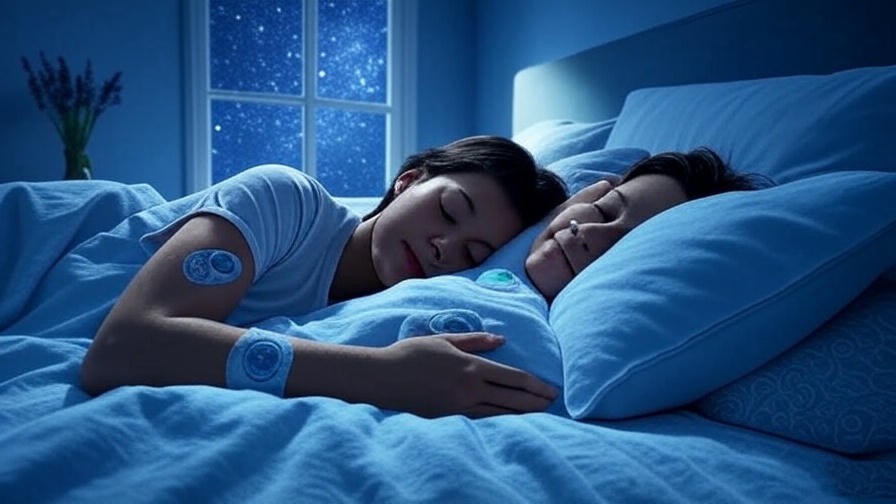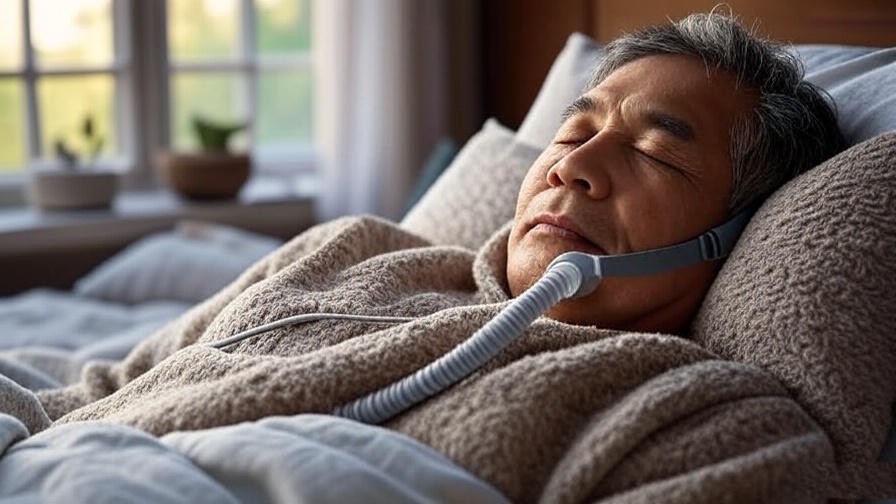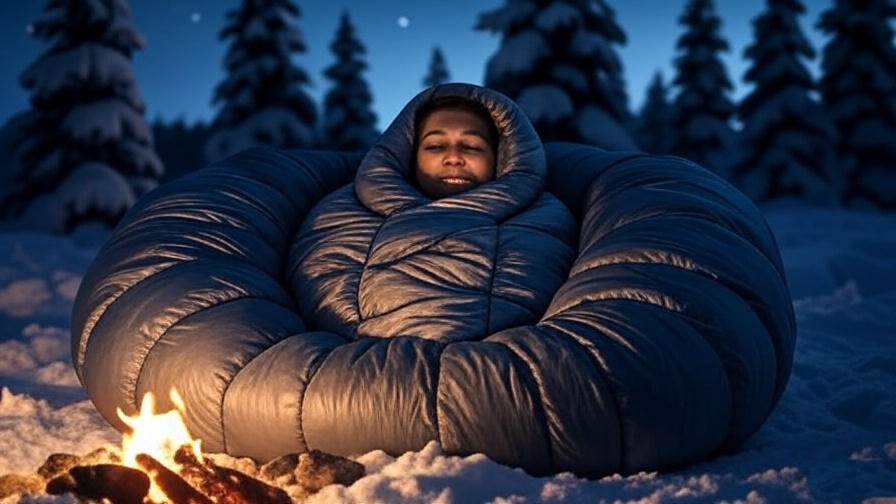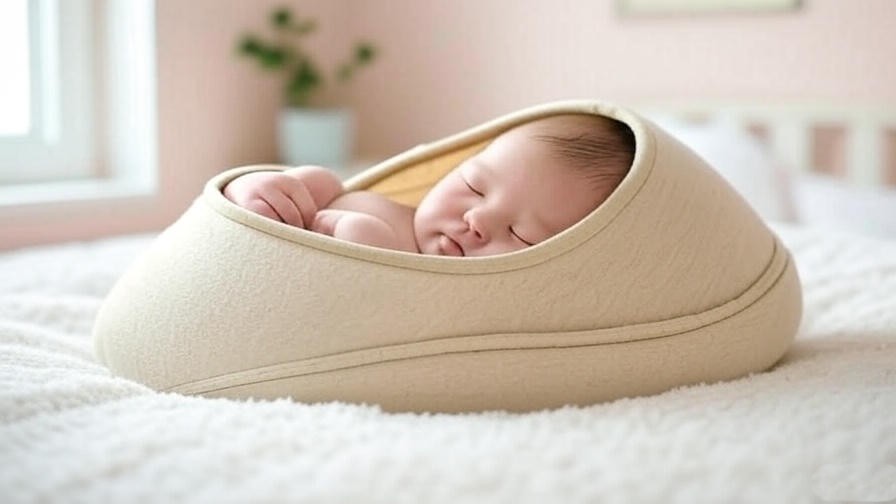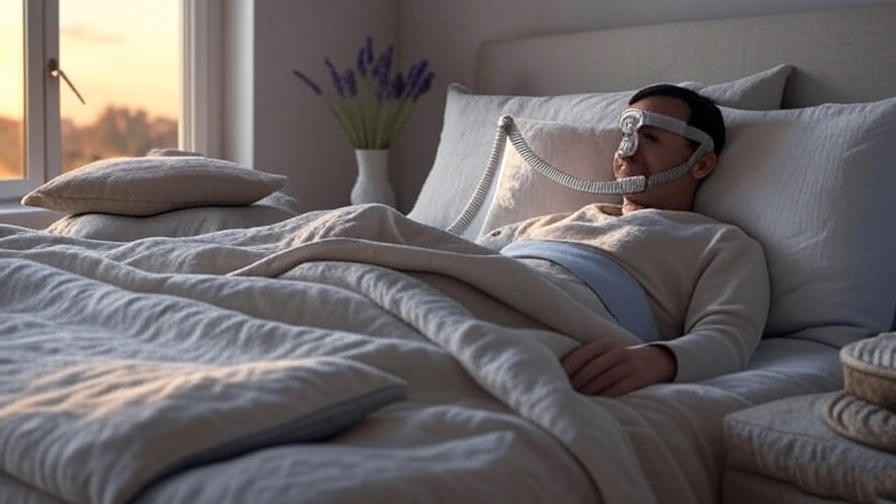Picture this: you’re nestled under a canopy of stars, the crisp air of the wilderness around you, and you wake up feeling as refreshed as if you’d slept in your own bed. The secret? An ultralight sleeping pad that cradles your body, insulates you from the cold ground, and fits effortlessly into your backpack. For backpackers, campers, and outdoor enthusiasts, quality sleep is the foundation of a successful adventure, enhancing physical recovery, mental clarity, and holistic well-being. But with countless options on the market, choosing the right ultralight sleeping pad can feel overwhelming. This comprehensive guide cuts through the noise, offering expert insights, top recommendations, and practical tips to help you find a pad that ensures restful sleep without weighing you down. Drawing on sleep science, gear testing expertise, and real-world feedback from seasoned adventurers, we’ll explore everything you need to know to make an informed choice.
Why an Ultralight Sleeping Pad Is Essential for Outdoor Sleep
The Role of Sleep in Outdoor Adventures
Sleep is the cornerstone of any outdoor experience. Whether you’re tackling a multi-day thru-hike or enjoying a weekend camping trip, restorative sleep fuels your body and mind. A 2018 study published in Frontiers in Physiology found that adequate sleep improves physical endurance, cognitive function, and mood stability—critical factors for navigating challenging terrains or simply savoring nature’s beauty. Without proper rest, fatigue can sap your energy, dull your focus, and diminish the joy of your adventure. An ultralight sleeping pad is more than just gear; it’s a tool for optimizing sleep quality, ensuring you wake up ready to conquer the trail.
Challenges of Sleeping Outdoors
Sleeping in the wilderness comes with unique challenges: uneven ground, cold temperatures, and the need to carry all your gear. Traditional sleeping pads can be bulky or heavy, adding strain to your pack and making long treks more grueling. Uneven terrain can cause discomfort, while cold ground can rob your body of heat, disrupting sleep. Ultralight sleeping pads address these issues by combining minimal weight, compact design, and effective insulation, allowing you to rest comfortably without sacrificing portability.
Benefits of Going Ultralight
Ultralight sleeping pads, typically weighing under 1.5 pounds (0.68 kg), are a game-changer for backpackers and minimalist adventurers. Their lightweight construction reduces pack weight, making it easier to cover long distances or tackle steep ascents. Despite their featherlight design, modern ultralight pads offer impressive insulation and comfort, ensuring you stay warm and supported. For those embracing a holistic outdoor lifestyle, these pads align perfectly with the ethos of traveling light while staying connected to nature. By prioritizing portability without compromising sleep quality, ultralight pads empower you to focus on the experience rather than the burden of heavy gear.
Understanding Ultralight Sleeping Pads: Key Features to Know
What Makes a Sleeping Pad “Ultralight”?
An ultralight sleeping pad is defined by its low weight (typically under 1.5 pounds) and compact pack size, making it ideal for backpacking and bikepacking. Unlike standard camping pads, which may prioritize plush comfort over portability, ultralight pads use advanced materials like lightweight nylon or thermoplastic polyurethane (TPU) to achieve a balance of durability, insulation, and minimal weight. These pads are designed to fit seamlessly into a backpack, often packing down to the size of a water bottle, making them a favorite among thru-hikers and ultralight enthusiasts.
Types of Ultralight Sleeping Pads
- Air Pads: These inflatable pads are the lightest and most packable option, often weighing as little as 8–12 ounces. They provide excellent comfort with adjustable firmness but may require careful handling to avoid punctures. Examples include the Therm-a-Rest NeoAir series.
- Foam Pads: Closed-cell foam pads, like the Therm-a-Rest Z-Lite, are ultralight (around 14 ounces) and highly durable, requiring no inflation. They’re less comfortable than air pads and bulkier when packed, but their reliability makes them a go-to for rugged adventures.
- Self-Inflating Pads: A hybrid option, self-inflating pads combine foam and air for a balance of comfort and ease. They’re slightly heavier (1–1.5 pounds) but offer convenience and durability, as seen in models like the Sea to Summit Ultralight SI.
Key Specs to Consider
When choosing an ultralight sleeping pad, several specifications determine its performance:
- R-Value (Insulation): The R-value measures a pad’s ability to insulate against cold ground, ranging from 1 (minimal insulation) to 7+ (winter-ready). For summer camping, an R-value of 1–2 suffices; for three-season use, aim for 3–4; for winter, choose 5 or higher.
- Weight and Pack Size: Look for pads under 1.5 pounds with a packed volume small enough to fit in your pack. For example, the Sea to Summit Ether Light XT packs down to 4 x 9 inches.
- Thickness and Comfort: Pads range from 1–4 inches thick. Thicker pads (2.5–3 inches) are ideal for side sleepers, while thinner pads suit back sleepers or ultralight purists.
- Durability and Materials: Lightweight materials like 20D nylon or TPU are common, but check for ripstop fabrics to prevent tears. Reinforced coatings enhance longevity.
- Noise Level: Some air pads crinkle loudly, which can disrupt sleep. Look for models with noise-reducing technologies, like the Nemo Tensor’s quiet construction.
How to Choose the Best Ultralight Sleeping Pad for Your Needs
Assessing Your Outdoor Sleep Needs
Choosing the right ultralight sleeping pad starts with understanding your unique needs. Ask yourself: Are you a side sleeper needing extra cushioning? Do you camp in cold climates requiring high insulation? Are you a minimalist prioritizing the lightest gear possible? Your sleep style, trip duration, and environmental conditions will guide your decision. For example, a thru-hiker tackling the Pacific Crest Trail needs a pad that’s ultralight and durable, while a weekend camper may prioritize comfort over minimal weight.
Matching Pads to Activities and Seasons
- Summer Camping: Low R-value pads (1–2) like the Klymit Static V Ultralite are sufficient for warm weather, offering lightweight comfort.
- Three-Season Camping: Pads with R-values of 3–4, such as the Therm-a-Rest NeoAir XLite, provide versatility for spring, summer, and fall.
- Winter Camping: High R-value pads (5+) like the Sea to Summit Ether Light XT Insulated ensure warmth in subzero conditions.
- Specific Activities: Bikepackers may prefer ultra-compact air pads, while car campers can opt for slightly heavier self-inflating models for added comfort.
Budget vs. Premium Options
Ultralight sleeping pads range from budget-friendly ($50–$100) to premium ($150–$200+). Affordable options like the Klymit Static V Ultralite offer solid performance for casual adventurers, while premium pads like the Therm-a-Rest NeoAir XTherm provide superior insulation and durability for frequent use. Investing in a high-quality pad can save money long-term by reducing the need for replacements, especially for avid backpackers.
Expert Tips for Testing and Comfort
- Test Before Buying: Lie on the pad in-store or at home to assess comfort, especially for your sleep position. Side sleepers should ensure adequate hip and shoulder cushioning.
- Pair with a Sleep System: Combine your pad with a lightweight sleeping bag or quilt and a compact pillow for optimal comfort. For example, pairing a Nemo Tensor pad with a Katabatic Gear quilt creates a cohesive setup.
- Check Pack Fit: Ensure the pad’s packed size fits your backpack without taking up critical space for other gear.
Top Ultralight Sleeping Pads for 2025: Expert Picks
Best Overall Ultralight Sleeping Pad
Therm-a-Rest NeoAir XLite NXT
- Specs: Weight: 12.5 oz (regular); R-Value: 4.5; Thickness: 3 in; Packed Size: 9 x 4.1 in; Price: ~$200
- Why It Stands Out: The NeoAir XLite NXT combines featherlight weight, excellent insulation, and plush comfort, making it ideal for three-season backpacking. Its updated design reduces noise and enhances durability with 30D ripstop nylon.
- Pros: High R-value for versatility, compact, comfortable for all sleep positions.
- Cons: Higher price point; requires careful handling to avoid punctures.
- User Feedback: Hikers on the Appalachian Trail praise its balance of warmth and weight, though some note the need for a patch kit.
Best Budget Ultralight Sleeping Pad
Klymit Static V Ultralite SL
- Specs: Weight: 12 oz; R-Value: 1.3; Thickness: 2.5 in; Packed Size: 8 x 3 in; Price: ~$80
- Why It Stands Out: Affordable yet reliable, this air pad offers decent comfort and packs small, perfect for summer backpacking or budget-conscious adventurers.
- Pros: Lightweight, budget-friendly, easy to inflate.
- Cons: Low R-value limits use to warm weather; less durable than premium options.
- User Feedback: Casual campers appreciate its value, though some report minor leaks after extended use.
Best for Extreme Cold
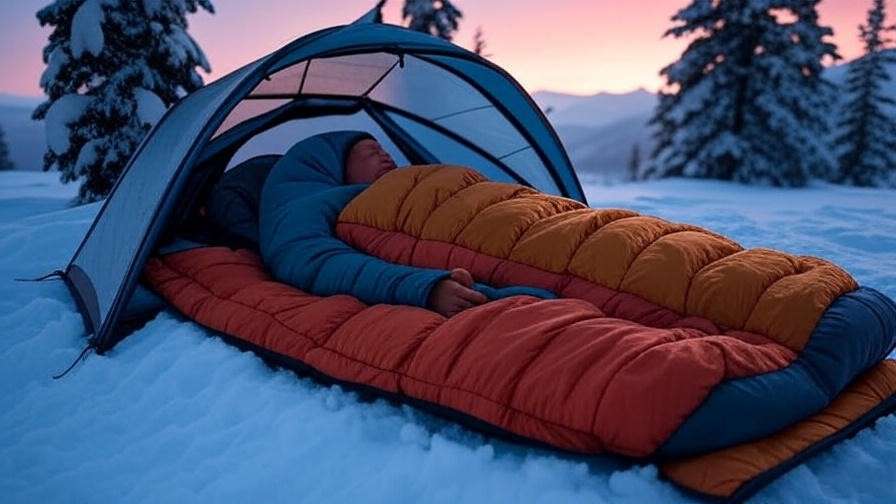
Sea to Summit Ether Light XT Insulated
- Specs: Weight: 15.2 oz; R-Value: 6.2; Thickness: 4 in; Packed Size: 11 x 4.5 in; Price: ~$190
- Why It Stands Out: With a high R-value and thick cushioning, this pad excels in winter conditions, keeping you warm and comfortable on snowy ground.
- Pros: Excellent insulation, plush comfort, quiet materials.
- Cons: Slightly heavier than other ultralight options.
- User Feedback: Winter campers love its warmth, though some find the inflation process slower than competitors.
Best for Side Sleepers
Nemo Tensor Ultralight Insulated
- Specs: Weight: 14.5 oz; R-Value: 4.2; Thickness: 3 in; Packed Size: 8 x 3 in; Price: ~$180
- Why It Stands Out: Designed with side sleepers in mind, the Tensor offers stable cushioning and quiet materials, ensuring uninterrupted sleep.
- Pros: Comfortable for side sleepers, low noise, good insulation.
- Cons: Slightly wider packed size; mid-range price.
- User Feedback: Side sleepers report excellent hip and shoulder support, with minimal crinkling noises.
Comparison Table
| Pad Model | Weight (oz) | R-Value | Thickness (in) | Packed Size (in) | Price ($) |
|---|---|---|---|---|---|
| Therm-a-Rest NeoAir XLite NXT | 12.5 | 4.5 | 3 | 9 x 4.1 | ~200 |
| Klymit Static V Ultralite SL | 12 | 1.3 | 2.5 | 8 x 3 | ~80 |
| Sea to Summit Ether Light XT | 15.2 | 6.2 | 4 | 11 x 4.5 | ~190 |
| Nemo Tensor Ultralight | 14.5 | 4.2 | 3 | 8 x 3 | ~180 |
How to Maximize Comfort and Durability with Your Ultralight Sleeping Pad
Setup and Inflation Tips
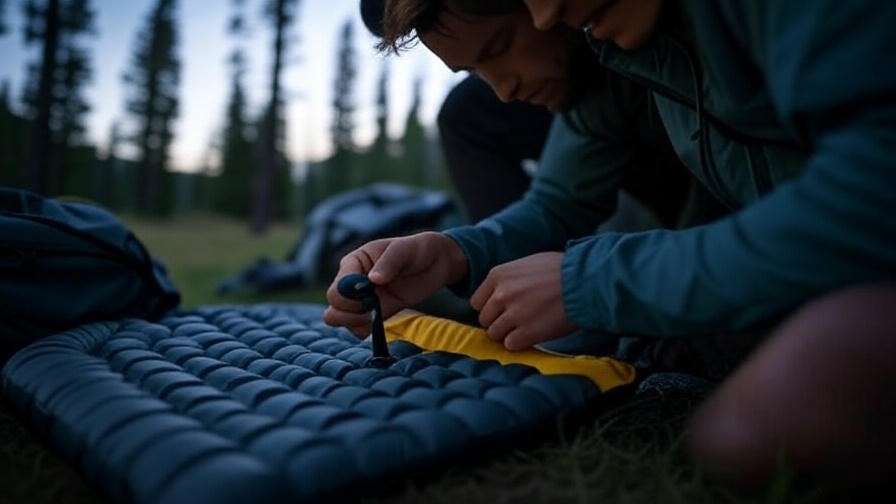
Proper setup is key to getting the most out of your ultralight sleeping pad. For air pads, use the included pump sack or a manual pump to inflate, as blowing directly into the pad can introduce moisture that leads to mold or material degradation. Inflate to your preferred firmness, but avoid over-inflation, which can stress seams and reduce comfort. For self-inflating pads, open the valve and let the pad expand naturally for a few minutes before topping it off with a few breaths. Always test inflation at home to familiarize yourself with the process, ensuring you’re prepared in the field. When setting up camp, clear the ground of sharp rocks or sticks to prevent punctures, and consider using a lightweight groundsheet for extra protection.
Maintenance and Care
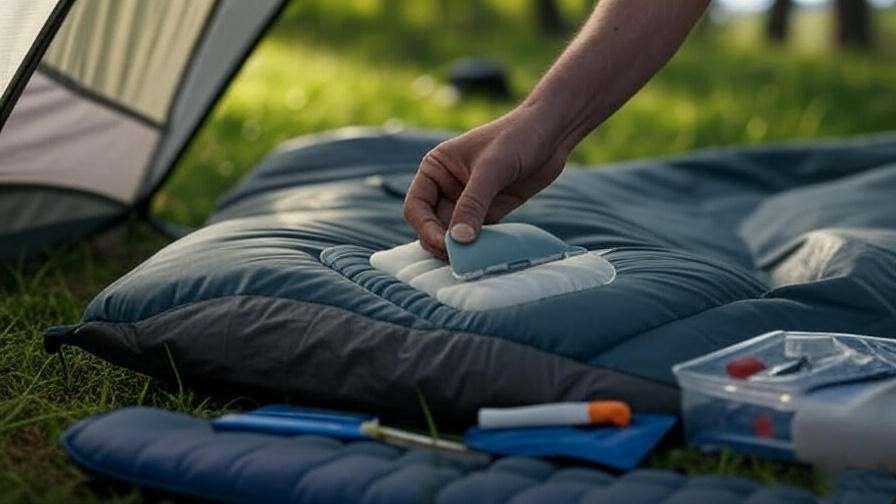
To extend the lifespan of your ultralight sleeping pad, proper care is essential. After each trip, clean the pad with a damp cloth and mild soap to remove dirt or sweat, then air-dry it completely before storing. Store the pad unrolled with the valve open in a dry, cool place to prevent material fatigue. For air pads, check for leaks by inflating and listening for hissing or submerging in water to spot bubbles. Most pads come with a repair kit; apply patches promptly to small punctures to prevent larger tears. Regular maintenance not only preserves durability but also ensures consistent comfort on every adventure.
Enhancing Sleep Quality Outdoors
An ultralight sleeping pad is just one part of a holistic sleep system. Pair it with a lightweight sleeping bag or quilt rated for the expected temperatures, and consider a compact camping pillow, like the Sea to Summit Aeros Ultralight, for added neck support. Choose a flat, smooth campsite to minimize discomfort from uneven ground, and position your pad to avoid slopes that could disrupt sleep. To enhance mindfulness and relaxation, practice a brief pre-sleep routine, such as deep breathing or stretching, to align with the holistic well-being focus of your outdoor experience. Earplugs can help block out ambient noises, ensuring a deeper, more restorative sleep.
Common Mistakes to Avoid
- Overlooking R-Value: Choosing a pad with insufficient insulation for cold weather can lead to chilly, restless nights. Always match the R-value to the lowest expected temperature.
- Ignoring Pad Size: A pad that’s too short or narrow for your body can cause discomfort. Ensure the pad fits your height and sleep style (e.g., wider pads for side sleepers).
- Neglecting Ground Protection: Sleeping directly on rough terrain increases the risk of punctures. Use a groundsheet or tent footprint for added safety.
- Over-Inflating Air Pads: Too much air reduces comfort and strains the pad’s materials. Aim for a slightly soft feel that supports your body naturally.
The Science of Sleep and Ultralight Pads: Why It Matters
How Sleeping Pads Impact Sleep Quality
Sleep science underscores the importance of comfort and temperature regulation for achieving deep, restorative sleep. A 2020 study in Sleep Medicine Reviews found that proper body support and thermal comfort significantly enhance REM sleep, which is critical for physical recovery and mental clarity. Ultralight sleeping pads contribute by cushioning pressure points and insulating against cold ground, preventing heat loss that can disrupt sleep cycles. For side sleepers, thicker pads (2.5–3 inches) reduce hip and shoulder strain, while high R-value pads maintain body warmth, creating an optimal sleep environment even in challenging conditions.
Holistic Well-Being in the Outdoors
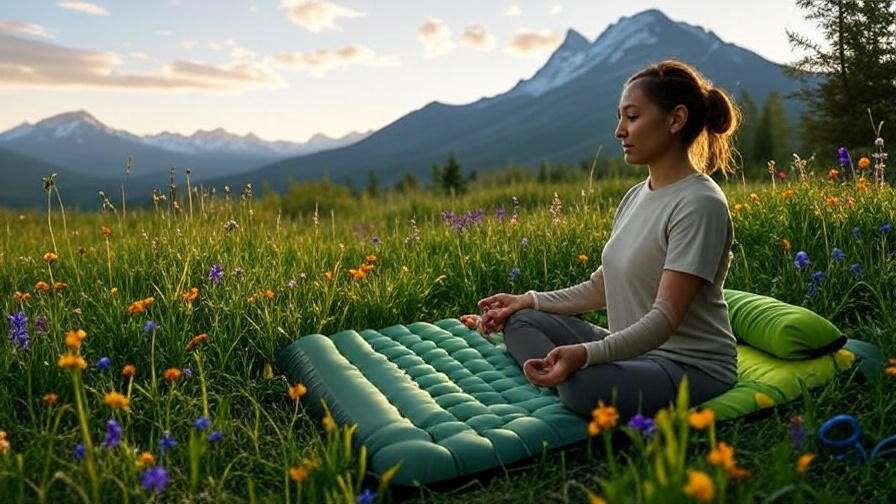
Quality sleep in nature goes beyond physical rest—it fosters mindfulness, happiness, and a deeper connection to the environment. Sleeping well allows you to wake up energized, ready to embrace the serenity of a sunrise hike or the calm of a meditative moment by a campfire. Ultralight sleeping pads support this holistic approach by minimizing gear-related stress, letting you focus on the joy of the journey. By prioritizing lightweight, effective gear, you align your outdoor adventures with wellness principles, enhancing both physical health and emotional fulfillment.
Expert Insights
Dr. Sarah Mitchell, a sleep researcher specializing in outdoor recreation, notes, “A well-chosen sleeping pad can make or break your outdoor experience. It’s not just about comfort—it’s about supporting your body’s natural sleep cycles to maximize recovery.” Veteran thru-hiker Emily Harper, who completed the Pacific Crest Trail in 2024, adds, “My Therm-a-Rest NeoAir XLite was a lifesaver. It kept me warm and comfortable without adding weight, letting me focus on the trail instead of my gear.” These insights highlight the real-world impact of choosing the right ultralight pad.
Frequently Asked Questions (FAQs)
What is the lightest sleeping pad available in 2025?
The Therm-a-Rest NeoAir UberLite, weighing just 8.8 ounces, is among the lightest pads available, ideal for ultralight backpackers prioritizing minimal weight.
How do I choose the right R-value for my camping trip?
Match the R-value to your trip’s lowest expected temperature: 1–2 for summer, 3–4 for three-season use, and 5+ for winter. Check weather forecasts and choose a pad that ensures warmth.
Are ultralight sleeping pads durable enough for regular use?
Yes, modern ultralight pads use durable materials like ripstop nylon or TPU. With proper care (e.g., using a groundsheet and avoiding sharp objects), they can last for years of regular use.
Can I use an ultralight sleeping pad for car camping?
Absolutely, though car campers may prefer thicker, heavier pads for added comfort since weight is less of a concern. Ultralight pads are still a great choice for versatility.
How do I repair a puncture in my sleeping pad?
Locate the leak by inflating the pad and listening for hissing or using soapy water to spot bubbles. Clean and dry the area, then apply a patch from the repair kit, pressing firmly for a secure bond.
What’s the best ultralight sleeping pad for side sleepers?
The Nemo Tensor Ultralight Insulated (3 inches thick, R-value 4.2) offers excellent cushioning and stability for side sleepers, minimizing pressure on hips and shoulders.
Conclusion
Choosing the right ultralight sleeping pad transforms your outdoor adventures, ensuring restful sleep that fuels your body and mind. By balancing weight, insulation, and comfort, these pads empower you to travel light while staying connected to nature’s restorative power. Whether you’re a thru-hiker chasing miles or a weekend camper seeking tranquility, the perfect pad is out there. Evaluate your needs, explore top picks like the Therm-a-Rest NeoAir XLite NXT or Nemo Tensor, and invest in gear that prioritizes your well-being. Ready to sleep soundly under the stars? Start your journey to better outdoor rest today.

